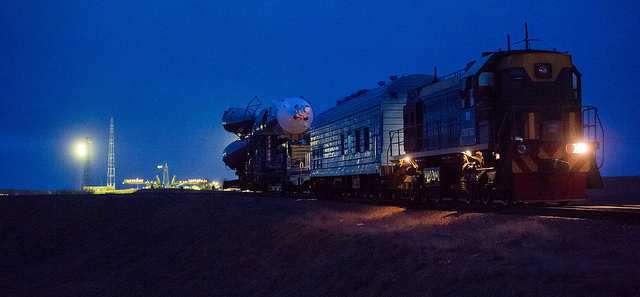
For the second time in less than a year, a NASA astronaut will soon set a new record for the longest cumulative time spent in space by an American citizen. Following the recent return of Scott Kelly from his (almost) year-long mission—during which he established a U.S. national record of more than 520 days in orbit, across a four-flight career—that total will be surpassed in August by veteran astronaut Jeff Williams. Together with his Russian crewmates, Alexei Ovchinin and Oleg Skripochka, Williams will launch aboard the Soyuz TMA-20M spacecraft from Site 1/5 (also known as “Gagarin’s Start”) at the Baikonur Cosmodrome in Kazakhstan at 5:26 p.m. EDT on Friday, 18 March (3:26 a.m. local time on Saturday, 19 March). The trio will pursue a now-standard four-orbit “fast rendezvous” and are expected to dock at the station’s space-facing (or “zenith”) Poisk module about six hours later. They will form the second half of Expedition 47, led by NASA astronaut Tim Kopra, for the first 11 weeks of their increment, before Williams rotates into the command of Expedition 48 and leads the station through early September.
Williams, Ovchinin, and Skripochka have been training together for more than two years, having been officially announced by NASA in February 2014. A retired U.S. Army colonel, the 58-year-old Williams will become the oldest NASA astronaut ever to board the ISS and the first American to embark on a third long-duration space station expedition. Selected as an astronaut candidate in May 1996, he became the first member of his class to perform a spacewalk on shuttle mission STS-101 in May 2000, before flying a pair of six-month increments to the ISS: Expedition 13 in March-September 2006 and Expedition 21/22 in September 2009-March 2010. Returning to Earth at the end of his third mission, Williams had accrued almost 362 days in space, an achievement which currently makes him the sixth most-seasoned U.S. astronaut. Scheduled to fly for 173 days on Expedition 47/48, by the time he lands in September with a total of 534 days, Williams will eclipse Scott Kelly’s national record by about two weeks and place himself at No. 1 on the U.S. list.
Joining him aboard Soyuz TMA-20M—the final member of this latest variant of Russian piloted space vehicles, whose four-generational heritage dates back to the mid-1960s—will be 44-year-old former Russian Air Force lieutenant-colonel Ovchinin and 46-year-old civilian engineer Skripochka. Ovchinin will occupy the center seat, commanding the spacecraft during its journey to and from the space station, with Skripochka located in the left-side “Flight Engineer-1” couch. Interestingly, Skripochka will be making his second mission, having also launched aboard the very first TMA-M, back in October 2010. Williams will sit in the right-side “Flight Engineer-2” position. As is customary, the crew will carry a fluffy toy to serve as an indicator of gravity (or the lack thereof) when they achieve orbit. In this case, it is a small pink owl, provided by Ovchinin’s daughter.
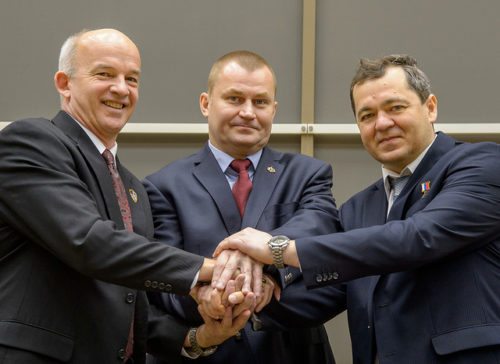
After a lengthy training regime, the trio and their backups—Russian cosmonauts Sergei Ryzhikov and Andrei Borisenko, together with NASA’s Shane Kimbrough—flew from the Star City training complex, on the forested outskirts of Moscow, to desolate Baikonur on 3 March. They participated in fit checks of their Sokol (“Falcon”) launch and entry suits aboard the “real” Soyuz TMA-20M, as engineers proceeded with loading the spacecraft’s tanks with propellants and pressurized gases. On 9 March, this fueling protocol concluded and the spacecraft was delivered to Baikonur’s Site 254 for integration into the payload fairing of the Soyuz-FG booster. In the meantime, both crews completed the customary traditions of raising their national flags and planting individual trees along the Avenue of the Cosmonauts. Last weekend, Williams tweeted a glorious sunrise perspective of the avenue, noting that each of its many trees was originally set in place by a space traveler.
Early Wednesday, the Soyuz-FG booster, bearing the spacecraft, was transported in a horizontal configuration from the assembly facility to the launch site at Site 1/5. The latter, known as “Gagarin’s Start,” is the same area from which Yuri Gagarin began his pioneering voyage, way back in April 1961. Raising the mammoth Soyuz-FG—which has powered every piloted Soyuz spacecraft to orbit since October 2002, having completed its first flight back in May 2001—to the vertical was delayed until Wednesday evening, due to high wind conditions in the vicinity of the pad.
Early Friday, the prime and backup crews will be awakened about 8.5 hours before T-0. They will shower and be disinfected, after which microbial samples will be taken in support of scientific and biomedical experiments. After breakfast, they will receive a traditional blessing by a Russian Orthodox priest and will depart Baikonur’s Cosmonaut Hotel, bound for Site 254, where they will be assisted into their Sokol suits. This will also offer them a last chance to speak to their families—albeit from behind glass screens—before the men head for the launch pad. At Site 1/5, Williams, Ovchinin, and Skripochka will be placed into their specially contoured seats aboard the Soyuz TMA-20M descent module and the hatch will be closed about two hours before liftoff.
Their Soyuz-FG is a direct descendent of Chief Designer Sergei Korolev’s R-7 booster, the world’s first Intercontinental Ballistic Missile (ICBM), and is loaded with liquid oxygen and a highly refined form of rocket-grade kerosene, known as “RP-1.” The oxygen will be continuously topped-off until close to T-0, in order to ensure that boiled-off cryogens are replenished and the tanks kept at “Flight Ready” levels. In the final 15 minutes, the Launch Abort System (LAS) will be armed and transferred to automatic mode and the three men will close their helmet visors. At T-5 minutes, Ovchinin’s controls will be activated and internal avionics will be spooled-up to monitor Soyuz-FG systems throughout ascent.
Inside the control bunker, the “launch key”—an actual physical key—will be inserted to enable the rocket’s ordnance, after which propellant tanks will be pressurized and the Soyuz-FG will transition to internal power. At T-10 seconds, the turbopumps of the RD-108 first-stage engine and the RD-107 engines of the four tapering, strap-on boosters will attain full speed. Five seconds later, the engines themselves will ignite, quickly ramping up to full power, before Site 1/5’s fueling tower retracts and Soyuz TMA-20M lifts off.
The four tapering boosters will be jettisoned about two minutes into the flight, by which time the vehicle will be traveling in excess of 1,100 mph (1,770 km/h). This will leave Williams, Ovchinin, and Skripochka under the thrust of the single RD-108 engine of the core, which will propel them onward. Five minutes after departing Baikonur, the exhausted core will be jettisoned at an altitude of 105.6 statute miles (170 km) and the Soyuz-FG’s third stage will ignite, pushing the crew to a velocity of 13,420 mph (21,600 km/h). By the time the third stage separates at nine minutes, they will have attained a preliminary orbit of 125 x 160 miles (200 x 260 km), inclined 51.6 degrees to the equator. Embarking on his first mission, Ovchinin will become the 544th human to enter space.
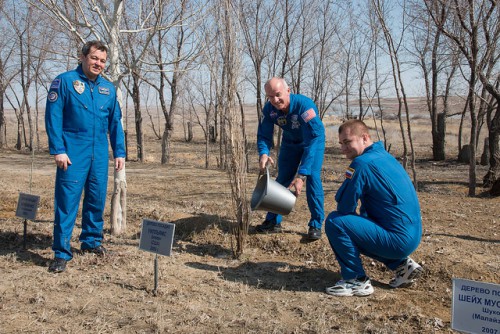
Alone, Soyuz TMA-20M will begin the process of deploying its electricity-generating solar arrays, together with its communications and navigation appendages. Next will come an intricate series of four maneuvering “burns” to raise their orbital apogeee to reach the operational altitude of the space station. The first burn (“DV-1”) will occur 45 minutes after launch, followed by DV-2 at 90 minutes into the flight and a pair of subsequent maneuvers to position them appropriately for a docking at Poisk at 11:12 p.m. EDT Friday. After a series of pressure and leak checks, hatches into the station will be opened at 12:55 a.m. EDT Saturday, 19 March. The new arrivals will be welcomed by the incumbent Expedition 47 trio of Commander Tim Kopra and his crewmates Yuri Malenchenko and Tim Peake, who have been aboard the ISS since mid-December.
During the course of their six months in orbit, Williams, Ovchinin, and Skripochka can expect to receive as many as eight visiting vehicles, including next week’s OA-6 Cygnus cargo ship, delivered to orbit atop a United Launch Alliance (ULA) Atlas V booster, on behalf of Orbital ATK. At the beginning of April, the crew will welcome Russia’s Progress MS-2 freighter—which, in addition to its principal role of delivering cargo and supplies, will also test enhancements for the piloted Soyuz-MS spacecraft—and SpaceX’s CRS-8 Dragon. The latter will carry the Bigelow Expandable Activity Module (BEAM) in its unpressurized trunk and, according to Novosti, this is expected to be robotically transferred to the aft port of the Tranquility node and deployed to its inflated configuration during the period of 23 May-2 June. In remarks made at last week’s Expedition 48/49 press conference, NASA astronaut Kate Rubins explained that current plans call for the module to be installed and in place by the time her crew arrives in late June.
Early in June, Kopra will hand over command of the space station to Williams, who will lead Expedition 48 through September. The outgoing crew of Kopra, Malenchenko, and Peake will board their Soyuz TMA-19M spacecraft on 5 June and return to Earth, wrapping up a 173-day increment. Williams’ crew will operate at a reduced capacity for the next two weeks, before Soyuz-MS arrives on 21 June, carrying Rubins, together with Russian cosmonaut Anatoli Ivanishin and Japan’s Takuya Onishi. The following few weeks are anticipated to feature a hive of activity aboard the outpost, as the OA-5 Cygnus—the first passenger aboard Orbital ATK’s upgraded Antares 230 booster—is launched at the tail end of June. Also targeted to fly during this period is SpaceX’s CRS-9 Dragon, which will deliver the first of two International Docking Adapters (IDA-2) for installation onto Pressurized Mating Adapter (PMA)-2 at the forward end of the Harmony node. This adapter will provide a primary docking location for NASA’s Commercial Crew operations from 2017 onward.
Following the robotic removal of IDA-2 from Dragon’s trunk and emplacement close to its installation site, a U.S. EVA will occur to install the adapter onto its permanent home. It remains unclear who will perform the spacewalk, although all three U.S. Orbital Segment (USOS) members of Expedition 48—Williams, Rubins, and Onishi—have received extensive EVA and robotics training for this operation. Two Russian spacewalks are also planned for the summer months, with Williams’ expedition also expected to feature the arrival of another Russian Progress-MS and SpaceX’s CRS-10 Dragon, laden with science payloads.
Current planning envisages Williams, Ovchinin, and Skripochka to board Soyuz TMA-20M early on 7 September and undock from Poisk for their return to Earth. At this early stage, the precise landing times remain to be determined, but if Expedition 48 runs to its expected duration, Williams will eclipse Scott Kelly’s national record for the most time spent cumulatively in space by a U.S. citizen on 23/24 August. Returning to Earth with a career total of around 534 days on four missions, he will not only establish himself as the most experienced U.S. astronaut, but also at No. 14 on the list of the most seasoned spacefarers of all time. And with an experience table topped for almost four decades by Soviet and Russian cosmonauts, no American has sat this high on the list since mid-1984.
Be sure to “Like” AmericaSpace on Facebook and follow us on Twitter: @AmericaSpace
Missions » ISS » Missions » ISS » Soyuz TMA-M » Missions » ISS » Soyuz TMA-M » TMA-20M »



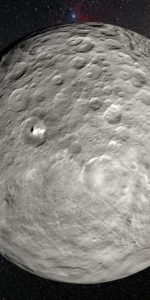
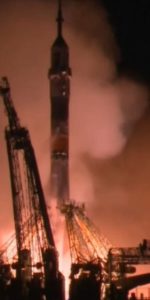
2 Comments
2 Pings & Trackbacks
Pingback:America’s Next Record-Breaker Rockets to Orbit for Six-Month Mission « AmericaSpace
Pingback:Jeff Williams and ‘Sardines’ Top the U.S. Spaceflight Experience Table « AmericaSpace